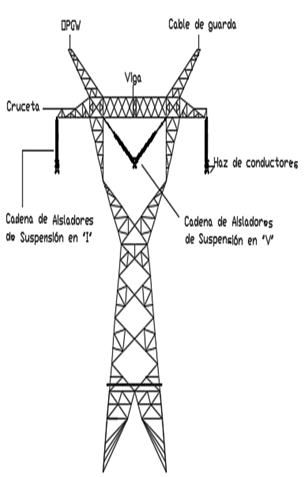Simulation of the electromagnetic field in an extra high voltage transmission line using the finite element method
Main Article Content
Abstract
This paper presents the results of the electromagnetic field simulation on the San Rafael - El Inga 500 kV overhead transmission line using the Finite Element Method with the FEMM software. The results obtained are contrasted with the measurements made on the site. With AutoCAD, the designs of the structures were raised at a 1:1 scale, which was exported to the FEMM program to carry out the corresponding simulations of the electromagnetic field emitted by the extra-high-voltage transmission lines. The structures located at different altitudes above sea level were considered. Various alternatives to the transmission line geometry were simulated to determine the values of electric and magnetic fields and to determine a suitable configuration that presents low values of the electromagnetic field. Finally, through the simulations performed in the FEMM program, the resulting adequate design for an extra-high voltage transmission line is shown.
Downloads
Article Details

This work is licensed under a Creative Commons Attribution 4.0 International License.
Authors who publish in this journal agree to the following terms: Authors retain the copyright and guarantee the journal the right to be the first publication of the work, as well as, licensed under a Creative Commons Attribution License that allows others share the work with an acknowledgment of the authorship of the work and the initial publication in this journal. Authors may separately establish additional agreements for the non-exclusive distribution of the version of the work published in the journal (for example, placing it in an institutional repository or publishing it in a book), with acknowledgment of its initial publication in this journal. Authors are allowed and encouraged to disseminate their work electronically (for example, in institutional repositories or on their own website) before and during the submission process, as it may lead to productive exchanges as well as further citation earliest and oldest of published works.
How to Cite
References
[2] R. J. Caola, D. W. Deno y V. S. W. Dymek, «Measurements of electric and magnetic fields in and around homes near a 500 kV transmission line,» IEEE Transactions on Power Apparatus and Systems, Vols. 1 de 2 PAS-102, nº 10, pp. 3338-3347 , Octubre 1983.
[3] R. Oficial, Norma de Radiaciones No Ionizantes de Campos Electromagnéticos, Quito: Editora Nacional, 2007, p. 80.
[4] ICNIRP, «Guidelines for limiting exposure to time-varying electric, magnetic, and electromagnetic fields (Up to 300 GHz), » pp. 494-515, 1998.
[5] B. Mena, Efecto corona en líneas de transmisión de 500 kV, Quito: Escuela Politécnica Nacional, 2008.
[6] C. E. Transeselectric, Estudio de impacto ambiental definitivo. Sistema de transmisión de extra alta tensión y sistemas asociados, Quito, 2013, p. 50.
[7] D. Meeker, Finite Element Method Magnetics, 4.2 ed., 2015
[8] IEEE Std. 644-1994, «Standard Procedures for Measurement of Power Frequency Electric and Magnetic Fields from AC Power Lines, » p. 31, 1994.
[9] K. A. Dao, V. P. Tran y C. D. Nguyen, «The Wireless Power Transmission Environment from GEO to the Earth and Numerical Estimation of Relative Permittivity vs. the Altitude in the Neutral and Ionized Layers of the Earth Atmosphere,» de International Conference on Advanced Technologies for Communications, 2014.
[10] S. Word, S. Ghania y E. Shaalan, «Three-Dimensional Electric Field Calculation and Measurements inside High Voltage Substations, » p. 4.
[11] Cabezas Rubio, K. D., yJiménez Corrales, P. D. Modelación, simulación y medición de los campos electromagnéticos en una línea de extra alto voltaje mediante el método de elementos finitos, caso de aplicación a línea de transmisión de 500 kV San Rafael–El Inga, Escuela Politécnica Nacional, Quito, 2019.

